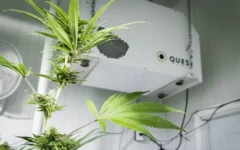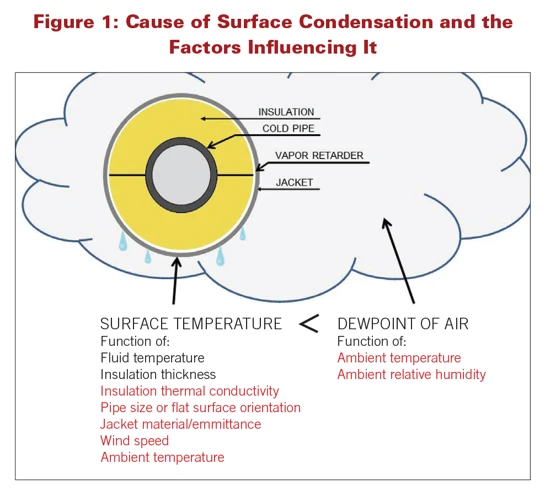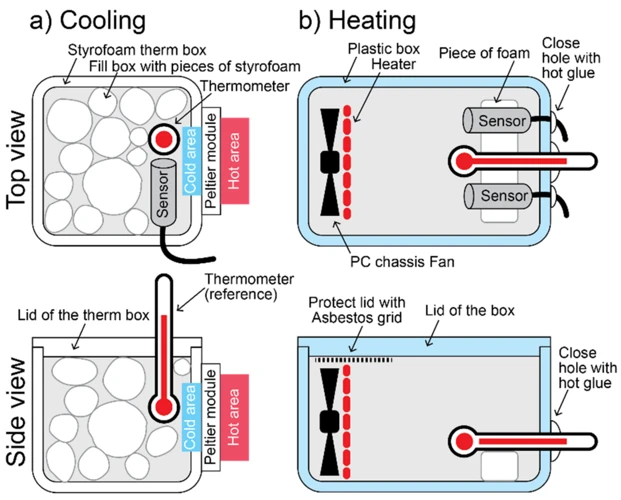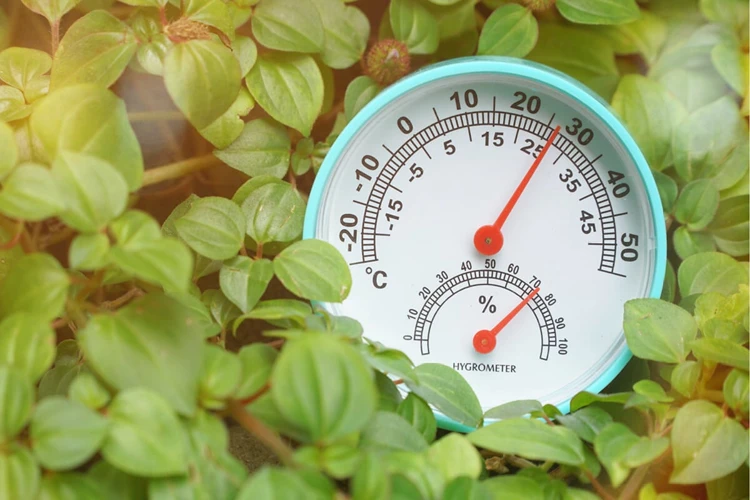
How to Avoid Common Mistakes When Controlling Temperature and Humidity for Cannabis Growing
Introduction
Contents
When it comes to growing cannabis, temperature and humidity control are crucial factors in ensuring a healthy and prosperous harvest. However, many growers, especially beginners, tend to make common mistakes that can lead to poor plant growth or even total crop failure. In this article, we will delve into the common mistakes that growers make when controlling temperature and humidity for cannabis growing and provide you with effective strategies to avoid them. Read on to discover how you can optimize your growing environment and achieve a bountiful harvest.
Understanding the Importance of Temperature and Humidity Control
Proper temperature and humidity control is of utmost importance for successful cannabis cultivation. Maintaining the right balance of temperature and humidity levels is necessary to ensure optimum growth and yield of high-quality cannabis plants. Temperature and humidity affect various physiological processes of the plant, including transpiration, photosynthesis, and respiration, which play a crucial role in plant growth and development.
| Factors | Effect on Cannabis Plants |
|---|---|
| Temperature | The correct temperature range is critical for vegetation, flowering, and overall health of the plant. Temperature affects the rate of photosynthesis, metabolism, and transpiration. Extreme temperatures can damage or kill the plant. |
| Humidity | Humidity affects transpiration, nutrient uptake, and overall yield of the plant. Too much humidity can lead to mold and mildew growth, while too little can restrict growth and lead to plant stress. |
Inadequate control of temperature and humidity can lead to various issues and ultimately impact the quality and quantity of the yield. As a grower, it is important to understand the optimal range of temperature and humidity levels required for different stages of growth. This knowledge helps in preventing common mistakes that can affect the health and performance of the plant. In the following sections, we will discuss the common mistakes growers make when controlling temperature and humidity, and how to avoid them.
Common Temperature Mistakes
When it comes to cannabis cultivation, maintaining the proper temperature is crucial for successful plant growth. Unfortunately, many growers tend to make several temperature-related mistakes that can hinder their plants’ development. In this section, we’ll explore some of the most common temperature mistakes made by cannabis growers and how to avoid them.
Not Monitoring Temperature Closely Enough
One of the most common mistakes that growers make when controlling temperature for cannabis plants is not monitoring the temperature closely enough. This can lead to fluctuations in temperature that can have negative effects on plant growth and yield. Here are some examples of how not monitoring temperature closely enough can impact your grow:
| Issue | Description |
|---|---|
| Heat Stress | Without proper monitoring, a grow area can quickly become too hot, causing plants to experience heat stress. This can result in wilting, yellowing, and ultimately a decrease in yield. |
| Cold Stress | On the other hand, if the temperature in the grow area drops too low, plants can experience cold stress. This can cause stunted growth and poor yields. |
| Inconsistent Growth | Even if the temperature stays within a reasonable range, not monitoring it closely enough can lead to inconsistencies in plant growth. This can make it difficult to achieve a uniform crop and can result in lower yields. |
To prevent these issues, it’s important to regularly monitor the temperature in your grow area and make adjustments as needed. This can be done using a thermometer or thermostat. With a thermometer, you can simply check the temperature at regular intervals and adjust your heating or cooling system accordingly. A thermostat, on the other hand, can automatically maintain a set temperature range for you.
Remember, cannabis plants are sensitive to temperature fluctuations, so it’s important to stay vigilant and monitor the temperature in your grow area closely.
Not Adjusting Temperature for Different Stages of Growth
Proper temperature control is crucial for the success of any cannabis grow operation. But many growers make the mistake of not adjusting the temperature for the different stages of growth.
During the vegetative stage, plants require a slightly cooler temperature range of 70-85°F (21-29°C) during the day and a cooler range of 58-70°F (14-21°C) at night. This temperature range promotes healthy growth and development of the leaves and stems.
During the flowering stage, the temperature should be adjusted to a slightly warmer range of 65-80°F (18-26°C) during the day and a cooler range of 55-70°F (13-21°C) at night. This temperature range helps improve the quality and yield of the buds.
Not adjusting the temperature for the different stages of growth can lead to a variety of issues such as stunted growth, nutrient deficiencies, and reduced yields.
To ensure that the temperature is properly adjusted for each stage of growth, it is important to use a quality thermometer and monitor the temperature regularly. By using an html table, you can easily see the temperature ranges for each stage of growth and adjust accordingly:
| Stage of Growth | Daytime Temperature Range | Nighttime Temperature Range |
|---|---|---|
| Vegetative | 70-85°F (21-29°C) | 58-70°F (14-21°C) |
| Flowering | 65-80°F (18-26°C) | 55-70°F (13-21°C) |
In addition to monitoring the temperature, it is important to have a reliable cooling or heating system in place to maintain the proper temperature range. By adjusting the temperature for each stage of growth, you can ensure that your plants are healthy, happy, and productive.
Overheating or Overcooling the Grow Area
Maintaining the correct temperature in a cannabis grow area is crucial for healthy plant growth. However, some common mistakes can cause overheating or overcooling of the grow area, which can have detrimental effects on the plants.
Here are some of the common ways growers overheat or overcool their grow area:
- Using incorrect lighting: Grow lights can produce a lot of heat, and if the wattage is too high for the grow area, it can quickly become too hot. On the other hand, if the wattage is too low, it can become too cool.
- Insufficient ventilation: Without proper ventilation, heat can become trapped and build up quickly in the grow area.
- Placing grow area in an unsuitable location: Placing the grow area in a room with poor insulation or inadequate airflow can cause temperature issues.
Conversely, overcooling the grow area can also be problematic. Some common mistakes that result in overcooling include:
- Using inadequate or incorrect heating: Using heaters that are too small or not designed for grow areas can result in insufficient heating, leading to low temperatures.
- Inefficient insulation: Without proper insulation, outdoor air temperatures can affect the temperature inside the grow room.
- Using air conditioning improperly: Keeping the air conditioning on for too long, or setting the temperature too low, can result in overcooling of the grow area.
It is important to monitor the temperature closely and make necessary adjustments to avoid overheating or overcooling. Growers can invest in equipment such as thermometers and hygrometers to ensure accurate temperature readings. Additionally, adjusting the lighting, insulation, and ventilation in the grow area can help regulate temperature.
Maintaining the ideal temperature range for cannabis growth is essential for healthy plant development. Avoiding overheating or overcooling can be achieved by identifying the causes of the issue and taking immediate action.
Common Humidity Mistakes
One of the most crucial factors in cannabis cultivation is maintaining the ideal humidity levels in the grow area. Unfortunately, many growers overlook the significance of humidity control and make common mistakes that can negatively impact plant growth and overall yield. However, with the right knowledge and precautions, you can avoid these errors and create a thriving growing environment for your cannabis plants. In this section, we will highlight some of the most common humidity mistakes that many growers make, and provide solutions for preventing them.
Not Monitoring Humidity Closely Enough
One common mistake that growers make when it comes to controlling the environment for cannabis growth is not monitoring humidity closely enough. Humidity plays a crucial role in the growth and development of cannabis plants, affecting everything from photosynthesis to pest and disease susceptibility.
To avoid this mistake, it’s important to regularly monitor and track humidity levels in your grow area. This can be done using specialized equipment, such as a hygrometer, which measures the amount of moisture in the air.
Not monitoring humidity levels can lead to problems such as mold growth and plant stress. If humidity levels are too low, your plants may experience drying out or overall stunted growth. Conversely, if the humidity levels are too high, this can foster the growth of mold and mildew, which can harm the plants and reduce yields.
To give an idea of the ideal humidity levels for different stages of cannabis growth, refer to the following table:
| Stage of Growth | Humidity Range |
|---|---|
| Seedling Stage | 60-70% |
| Vegging Stage | 40-60% |
| Flowering Stage | 40-50% |
As shown in the table, the ideal humidity levels vary depending on the stage of growth. Not adjusting the humidity levels accordingly can lead to problems, such as reduced yields and unhealthy plants.
It’s vital to closely monitor humidity levels and make necessary adjustments to keep your plants healthy and thriving. With the right equipment and knowledge, you can avoid this common mistake and ensure optimal humidity levels for your cannabis plants.
Not Adjusting Humidity for Different Stages of Growth
Maintaining proper humidity levels is crucial for the successful growth of cannabis plants. It’s important to understand that the ideal humidity range for cannabis changes throughout different stages of growth. Not adjusting humidity accordingly can lead to a variety of issues, such as stunted growth, mold, and other pests.
Here is a breakdown of optimal humidity ranges for the different stages of growth:
| Stage of Growth | Humidity Range |
|---|---|
| Germination | 70-80% |
| Seedling Stage | 65-70% |
| Vegging Stage | 40-70% |
| Flowering Stage | 40-50% |
As you can see, the ideal humidity range decreases as the plant matures. While it’s important to keep humidity high during the germination stage, lowering humidity during the flowering stage is necessary to prevent mold growth.
A common mistake is to try to maintain the same humidity level throughout the entire growth cycle. This can lead to issues such as mold or other pests, which can damage or even kill the plant.
To avoid this mistake, regularly check the humidity levels and adjust accordingly. Invest in a good humidifier and dehumidifier to help regulate humidity levels. It’s also important to keep air flowing through the grow area to prevent stagnant air, which can contribute to mold growth.
By adjusting humidity levels throughout each stage of growth, you can help ensure a healthy and successful harvest.
Overhumidifying or Underhumidifying the Grow Area
Maintaining optimal humidity levels is critical for healthy cannabis growth, and failing to do so can result in poor yields, stunted growth, and even plant death. However, it’s easy to make mistakes when trying to control humidity levels in your grow area.
Overhumidifying the Grow Area: Overhumidifying occurs when there is too much moisture in the air, which can create an environment that is conducive to mold and mildew growth. This can be caused by several factors, including inadequate air circulation, excessive watering, or incorrect use of humidifiers. Additionally, humidity levels that are too high can lead to a decrease in plant transpiration, which can ultimately stunt growth.
Underhumidifying the Grow Area: Conversely, underhumidifying occurs when there is not enough moisture in the air, which can cause plants to lose moisture faster than they can absorb it. This can lead to wilting, leaf damage, and ultimately, plant death. Low humidity levels can be caused by factors like insufficient watering, inadequate humidification, or excessively low temperatures.
To avoid overhumidifying or underhumidifying your grow area, it’s important to carefully monitor and adjust humidity levels regularly. Investing in a quality hygrometer can help you track humidity levels accurately. Additionally, you should be aware of the optimal humidity ranges for different stages of plant growth and adjust your humidification accordingly. Finally, finding the right balance for your specific grow area is key to maintaining optimal humidity levels for healthy cannabis growth.
How to Avoid These Mistakes
Now that we have explored the common mistakes when controlling temperature and humidity for cannabis growing, it is important to discuss how to avoid these pitfalls. While it is impossible to achieve perfect conditions every time, there are steps you can take to minimize mistakes and optimize your grow area. Investing in proper monitoring equipment, understanding the optimal ranges for each stage of growth, and finding the right balance for your specific environment are all crucial factors to consider. Let’s delve into these tips in more detail.
Invest in Quality Monitoring Equipment
Investing in quality monitoring equipment is crucial for ensuring that you have accurate and reliable data on the temperature and humidity levels in your grow area. Failure to monitor these key metrics could lead to costly mistakes that could negatively impact the health and potency of your cannabis plants.
Here are some reasons why it is important to invest in quality monitoring equipment:
- Accuracy: Cheap or outdated equipment may not provide accurate measurements of temperature and humidity. Investing in high-quality equipment ensures that you have reliable and trustworthy data to work with.
- Consistency: Reliable equipment will give you consistent readings, which is essential for maintaining the ideal conditions for your plants.
- Efficiency: Monitoring equipment that is easy to use and interpret can save a lot of time and effort. It allows growers to spend less time checking and adjusting conditions, and more time focusing on other important tasks such as harvesting and trimming.
- Early Warning: Good monitoring equipment can alert growers to changes in temperature and humidity before they become serious problems. Early warning can help growers to take action quickly, preventing damage to the plants.
There are many monitoring equipment options available on the market, ranging from budget-friendly options to more expensive, advanced models. Some popular types of monitoring equipment include digital thermometers, hygrometers, and data loggers.
When investing in monitoring equipment, it is important to choose one that suits your specific growing needs. Make sure to do some research to determine what types of equipment are best suited for your growing environment, and which brands have the best reputation for accuracy and reliability.
Understand the Optimal Temperature and Humidity Ranges for Different Stages of Growth
It is important to understand the optimal temperature and humidity ranges for different stages of growth in order to ensure successful cannabis cultivation. Here are some general guidelines to follow:
- Seedling Stage: During the first few weeks of a plant’s life cycle, the optimal temperature range is between 68-77°F (20-25°C), with a humidity range of 65-70%. It is important to keep the soil moist but not overwatered in order to prevent damping-off disease.
- Vegetative Stage: During this stage, the plant is growing rapidly and requires more nutrients and water. The optimal temperature range is similar to the seedling stage, but with slightly higher humidity levels of 40-70%. This stage typically lasts 4-8 weeks.
- Flowering Stage: In this stage, the plant begins to produce buds and the temperature needs to be adjusted accordingly. The optimal temperature range is 68-75°F (20-24°C) during the day, with a slightly cooler temperature at night. Humidity levels should also be lowered to 40-50% in order to prevent mold growth.
- Harvest Stage: During the last week or two before harvest, the temperature should be kept at the lower end of the optimal range to prevent the plant from producing any more resin. The humidity should also be lowered to 30-40% in order to prevent mold growth and ensure a smooth harvest process.
By understanding and adjusting the temperature and humidity ranges according to the specific stage of growth, you can optimize your cannabis cultivation and produce high-quality, potent buds.
Find the Right Balance for Your Specific Grow Area
Finding the right balance of temperature and humidity for your specific grow area is crucial to ensure the health and optimal growth of your cannabis plants. It is important to remember that different grow areas may require different temperature and humidity settings depending on factors such as the size of the area, the number of plants, and the type of equipment being used. Here are some steps to help find the right balance for your specific grow area:
- Experiment with different settings: Try different temperature and humidity settings and monitor how your plants respond. Note any changes in growth or any signs of stress such as wilting or discoloration.
- Consider the environmental conditions: Take into account the outside temperature and humidity levels. If the outside environment is extremely hot or humid, you may need to adjust your settings accordingly to maintain optimal conditions inside your grow area.
- Adjust based on plant stage: Remember to adjust temperature and humidity settings as your plants progress through different growth stages. For example, during the vegetative stage, plants require higher humidity levels, while during the flowering stage, humidity levels should be lower to prevent mold and mildew growth.
- Monitor regularly: Continuously monitor the temperature and humidity levels in your grow area to ensure they remain within the ideal range for your plants. Use quality monitoring equipment and keep a log of your readings to help identify any patterns or trends.
- Make adjustments as needed: If you notice any issues with your plants, such as slow growth or stress, make adjustments to your temperature and humidity settings accordingly. Don’t be afraid to make small changes and closely monitor the results.
By finding the right balance of temperature and humidity for your specific grow area, you can help ensure the optimal growth and health of your cannabis plants. Remember to regularly monitor and adjust your settings as needed to maintain the ideal conditions for each stage of growth.
Conclusion
In conclusion, controlling the temperature and humidity levels is a vital aspect for successful cannabis growth. Any mistakes in these areas can significantly impact the quality and yield of the final product. It’s important to take the time to understand the optimal conditions for each stage of growth and to invest in high-quality monitoring equipment to ensure accuracy.
By closely monitoring temperature and humidity levels and making necessary adjustments, growers can avoid common mistakes such as overheating or overcooling the grow area, overhumidifying or underhumidifying, and not adjusting levels for different stages of growth.
Finding the right balance for your specific grow area can take some trial and error, but it’s important not to give up. With patience and dedication, growers can achieve the ideal environment for their cannabis plants to thrive and produce superior quality buds.
Remember, the success of your cannabis growth ultimately relies on the care and attention you give your plants. By avoiding common mistakes and putting in the effort, you can create a successful and bountiful cannabis harvest.
Frequently Asked Questions
What is the ideal temperature range for growing cannabis?
The ideal temperature range for growing cannabis is between 70-85°F (21-29°C). It’s important to maintain a consistent temperature within this range for optimal growth.
What is the optimal humidity range for cannabis plants?
The optimal humidity range for cannabis plants is between 40-60%. Humidity that is too high can lead to mold and mildew growth, while humidity that is too low can cause the plant to dry out too quickly.
Can I use a regular thermometer and hygrometer to monitor temperature and humidity?
While regular thermometers and hygrometers can give you a general idea of the temperature and humidity in your grow area, it’s recommended to invest in quality monitoring equipment for more accurate readings.
What happens if the temperature in my grow area gets too hot or too cold?
If the temperature in your grow area gets too hot or too cold, it can have negative effects on your plants’ growth and development. This can include stunted growth, reduced yield, and even death in extreme cases.
Why is it important to adjust the temperature and humidity for different stages of growth?
Cannabis plants have different temperature and humidity needs during different stages of growth. Failing to adjust these factors accordingly can lead to suboptimal growth and reduced yield.
Is it better to overhumidify or underhumidify my grow area?
Neither overhumidifying nor underhumidifying your grow area is ideal. Overhumidifying can lead to mold and mildew growth, while underhumidifying can cause the plant to dry out and stunt growth.
What are some signs that my temperature or humidity levels are off?
Signs that your temperature or humidity levels may be off can include wilting leaves, yellowing or browning of leaves, and stunted growth.
How can I find the right balance for my specific grow area?
It’s important to experiment with different temperature and humidity settings to find the right balance for your specific grow area. Keep track of how your plants respond to different conditions and adjust accordingly.
What are some common mistakes to avoid when controlling temperature and humidity for cannabis growing?
Common mistakes to avoid include not monitoring levels closely enough, not adjusting for different stages of growth, and overhumidifying or underhumidifying your grow area.
Can I use a dehumidifier or humidifier to control humidity levels?
Yes, a dehumidifier and humidifier can be helpful tools for controlling humidity levels in your grow area. Just be sure to monitor levels closely and adjust as necessary.





